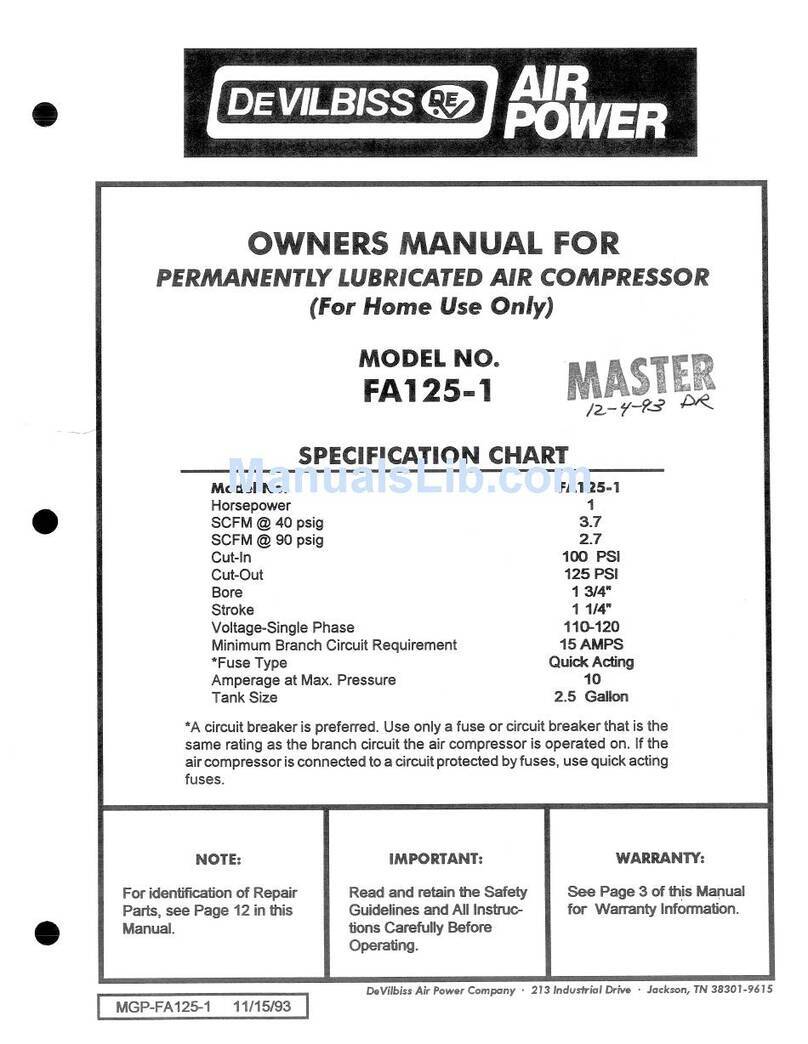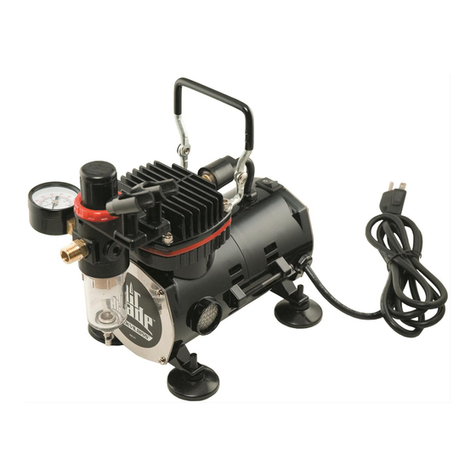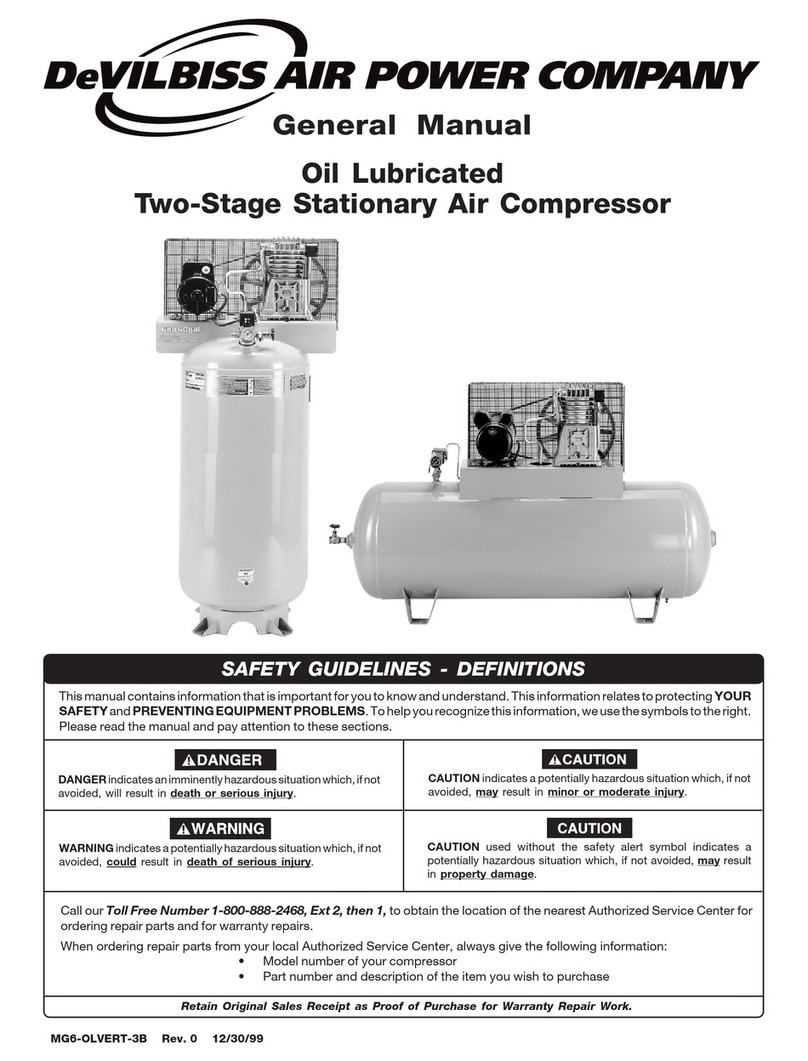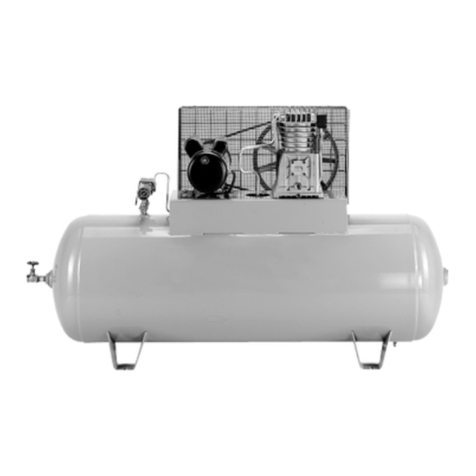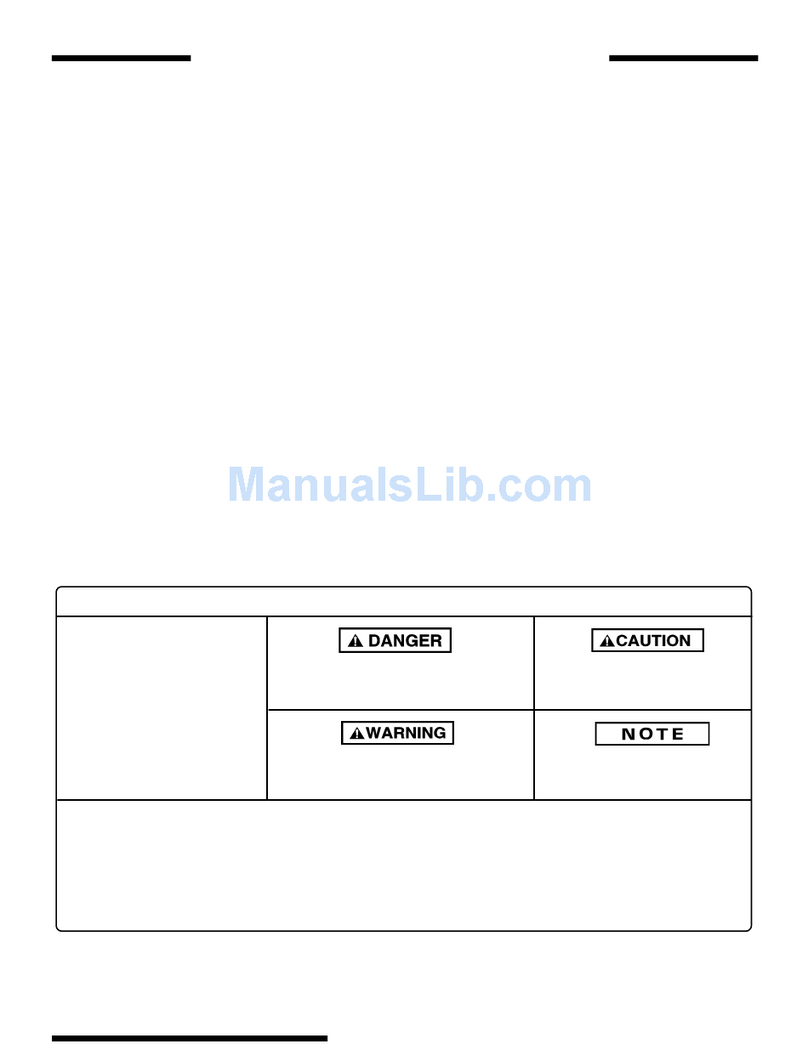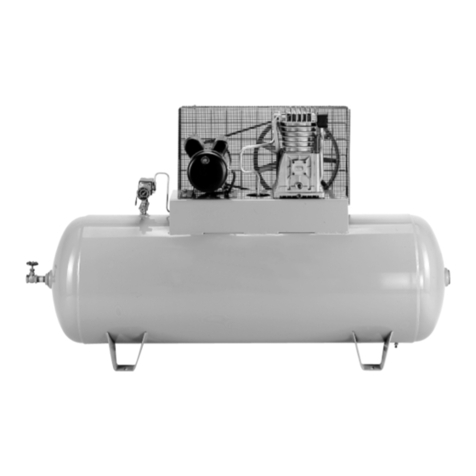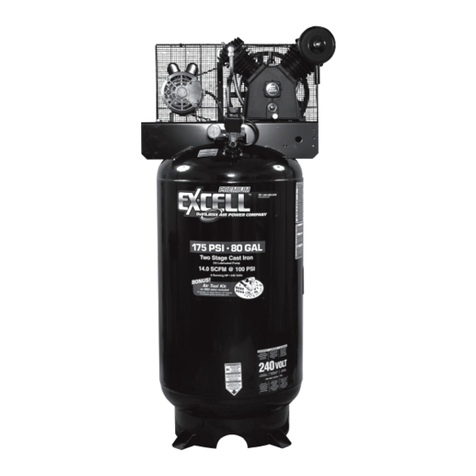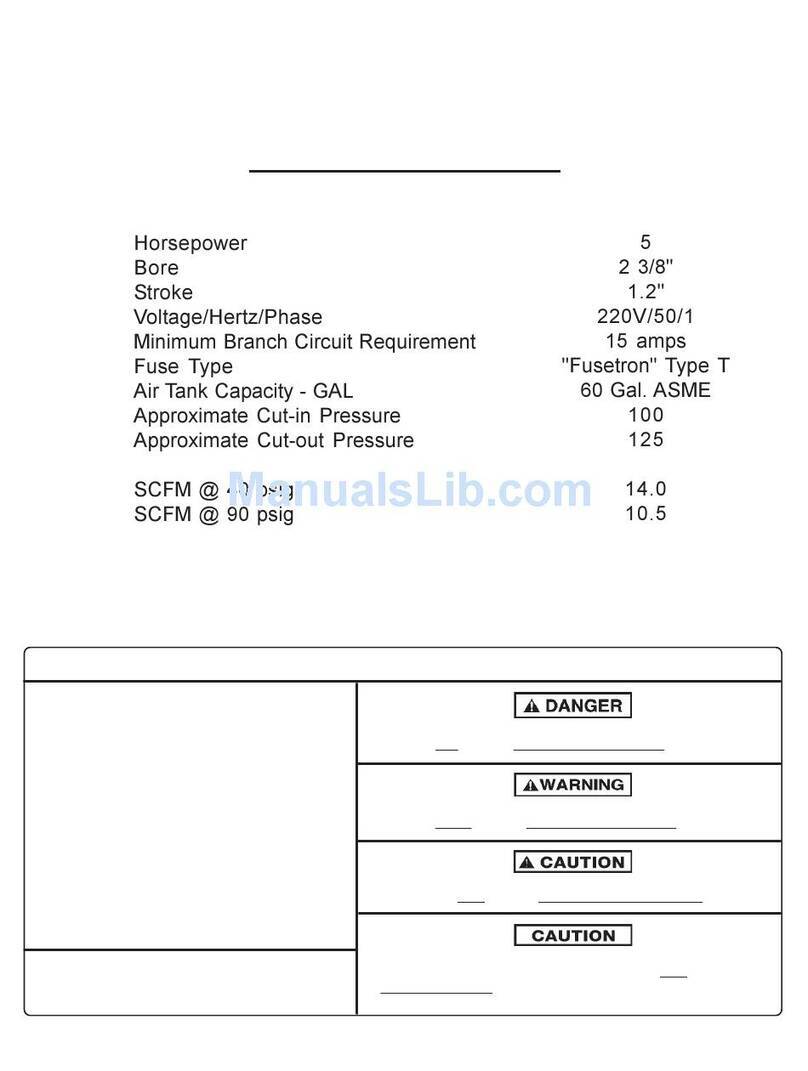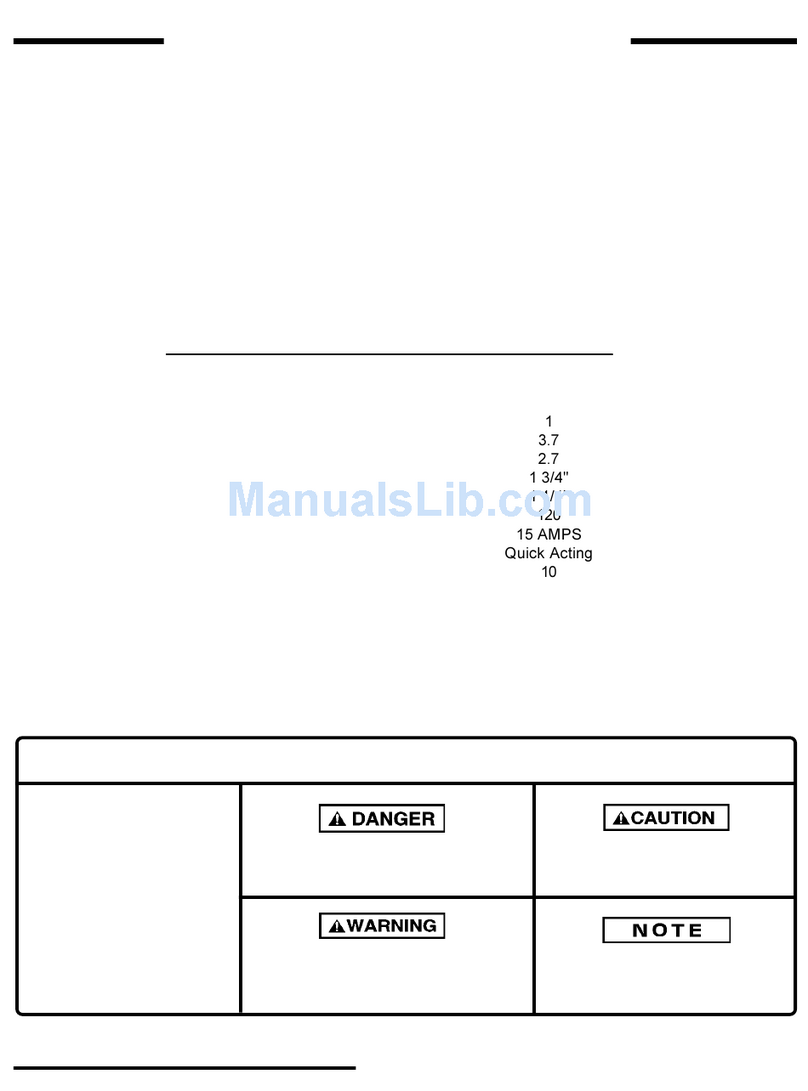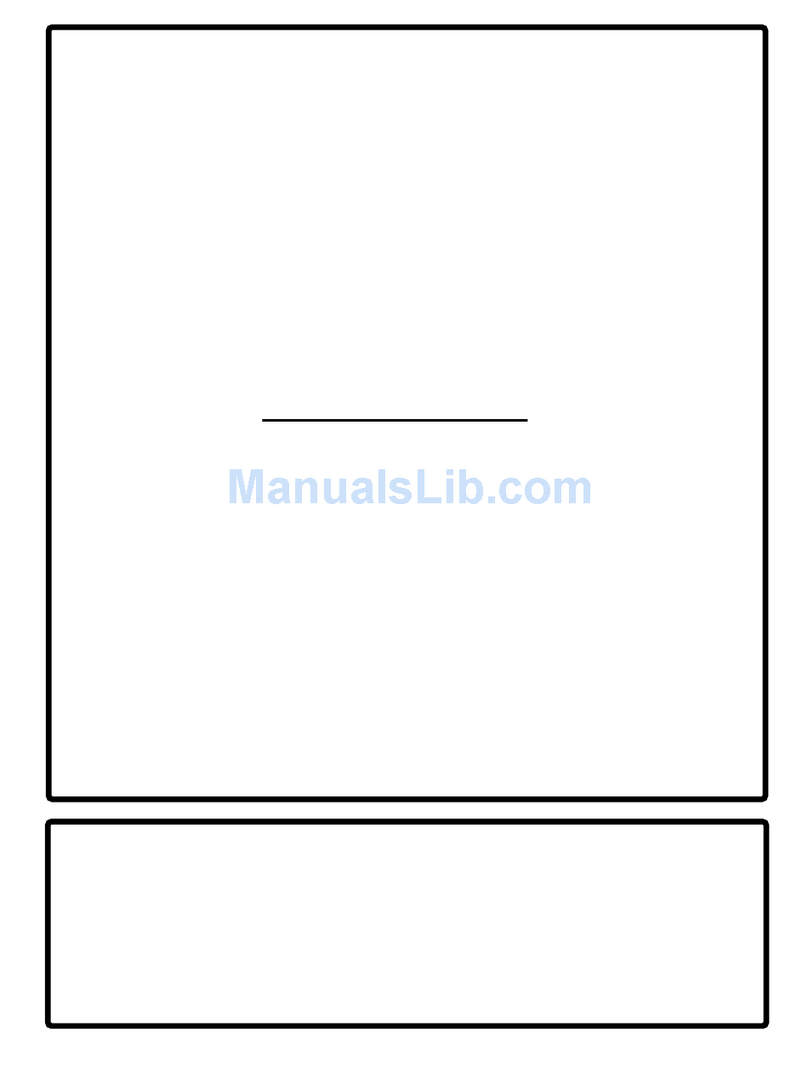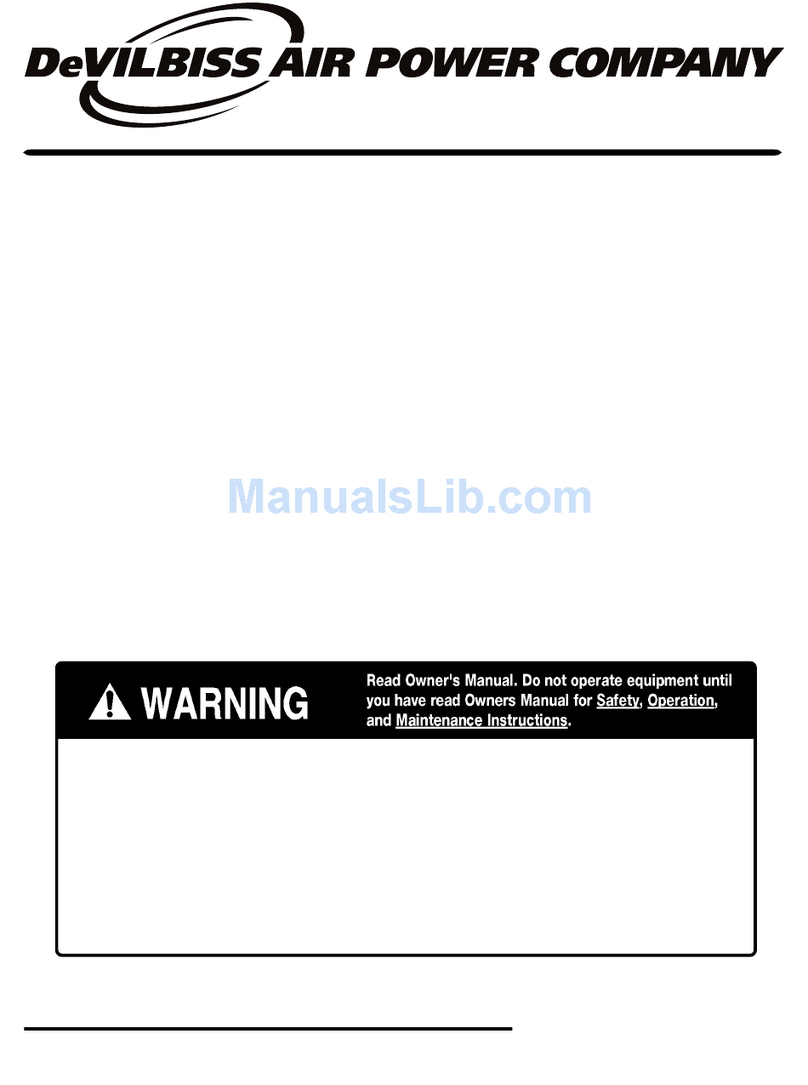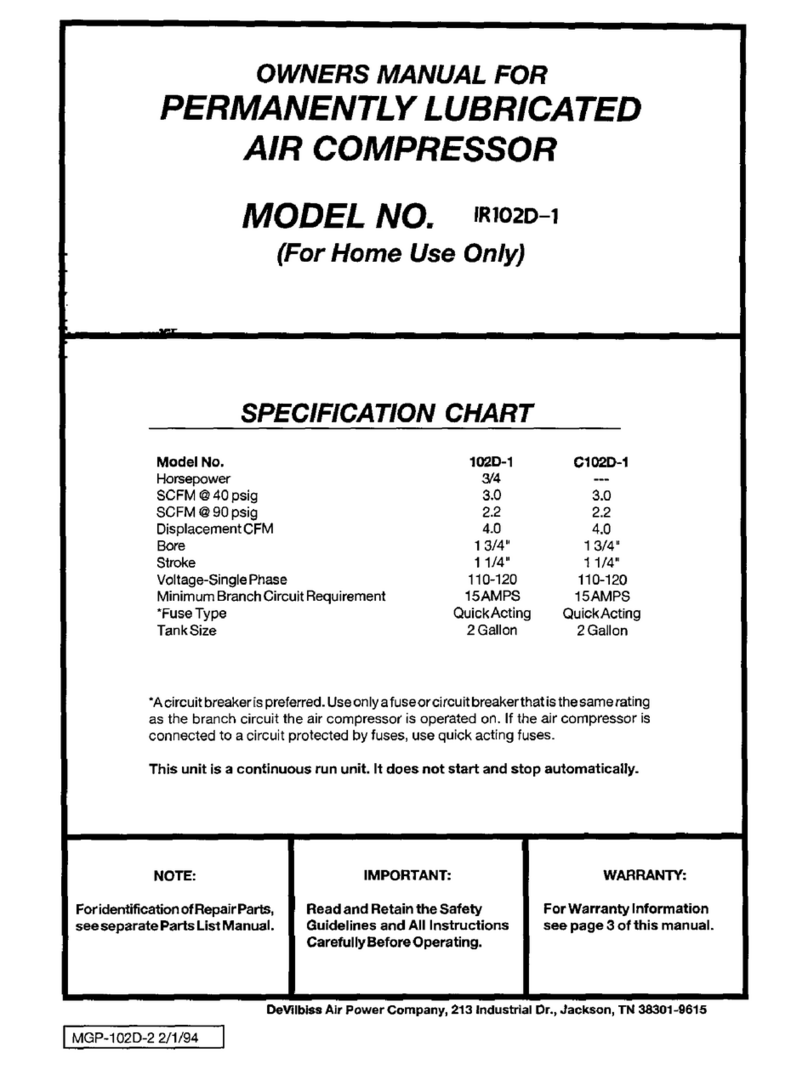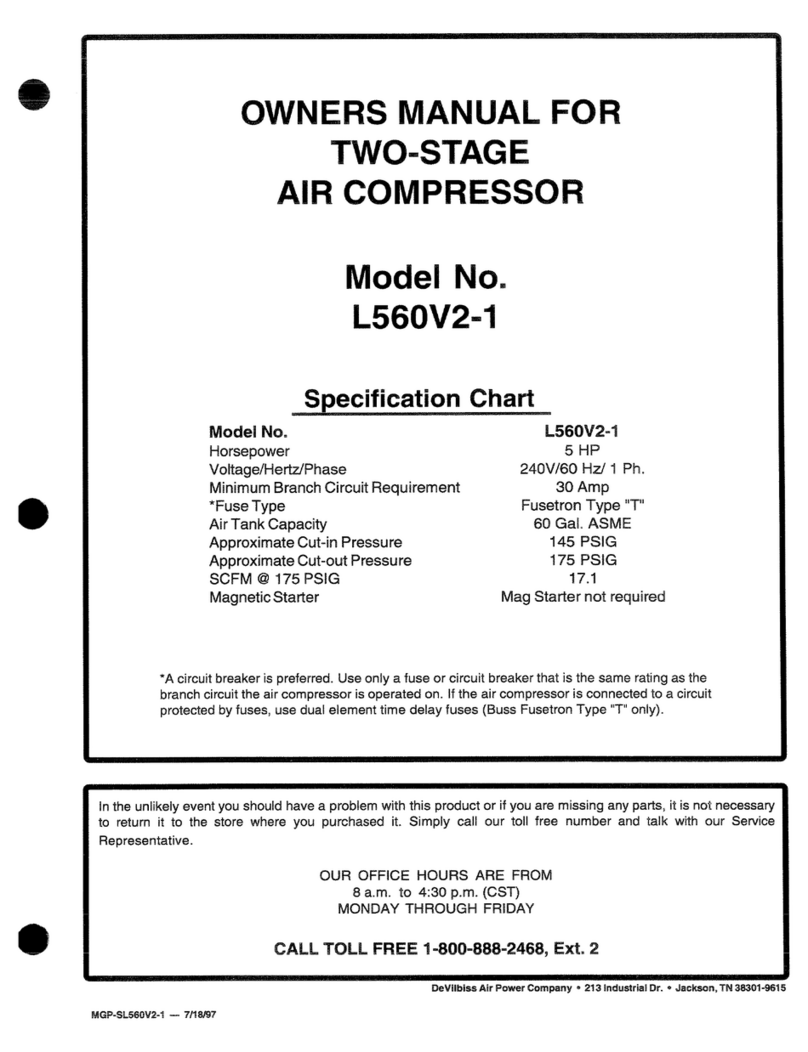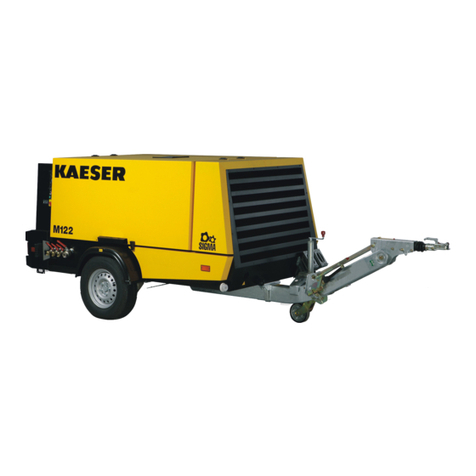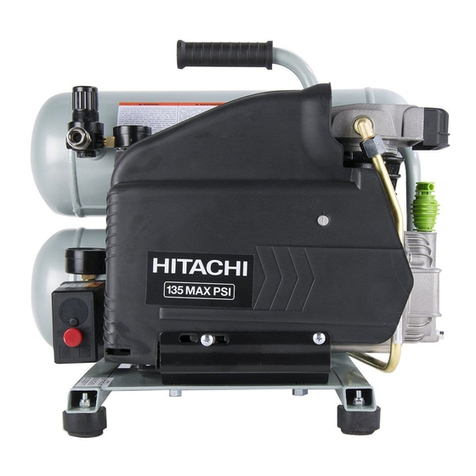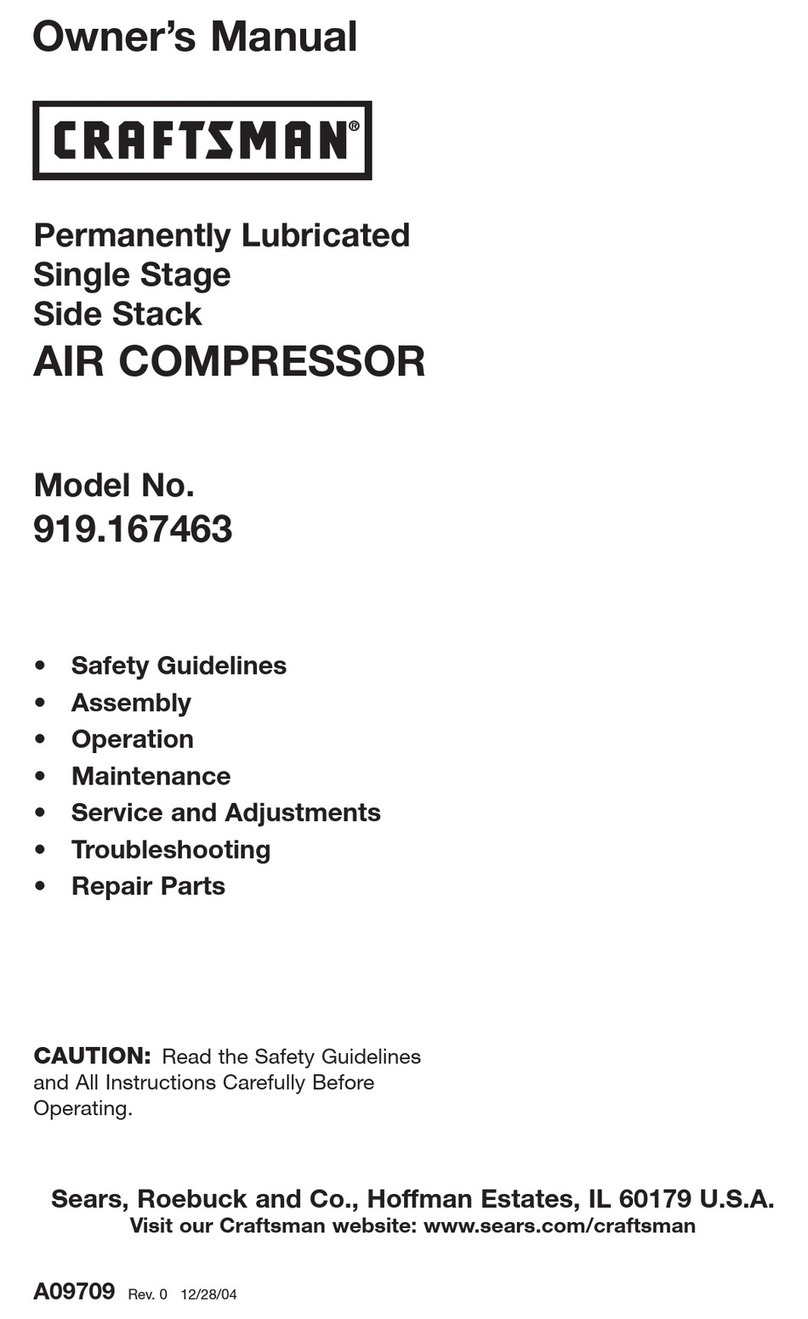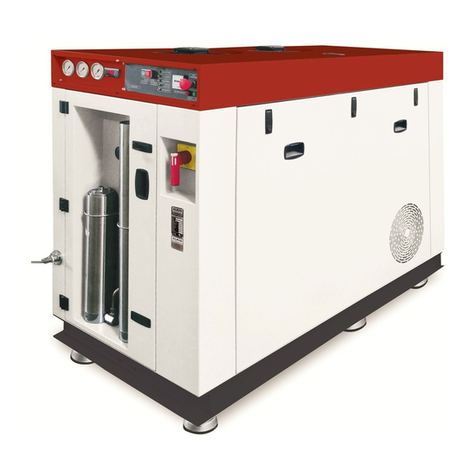
6
Operate the air compressor in a clean, dry and well ventilated area.
The air intake filter must be kept clear of obstructions which could
reduceair delivery of the aircompressor. The air compressor should
be located at least 12" away from walls or other obstructions that
could interfere with the flow of air through the fan bladed flywheel.
The air compressor crankcase and head are designed with fins to
provide proper cooling.
The flywheel side of the outfit should be placed toward the wall and
protected with a totally enclosed belt guard. In no case should the
flywheel be closer than 12 to 18 inches from the wall or other
obstruction that will interfere with the flow of air through the fan
bladed flywheel. The area should allow space on all sides for air
circulationandfor ease of normal maintenance. Keep the outfit away
from areas which have dirt, vapor, and volatile fumes in the atmo-
sphere which may clog and gum the intake filter and valves, causing
inefficient operation.
If humidity is high, an air filter can be installed in line to remove
excessive moisture. Closely follow instructions packaged with the
filter for proper installation. It must be installed as close as possible
to the accessory.
The air compressor should be as near to air outlets as possible in
orderto avoid long pipe lines. Do not placethe air compressor where
heat is excessive.
Do not use an extension cord. To avoid voltage drop and power loss
to the motor, use extra air hose instead of an extension cord.
Anchoring of Vertical Unit
INSTALLATION AND BREAK-IN PROCEDURES
THE MANIFOLD ASSEMBLY DOES NOT PROVIDE
ADEQUATESTABILITYOR SUPPORT FOR LIFTING
THE UNIT. IF THE OUTFIT MUST BE MOVED, USE
THE TANK FOR LIFTING.
VIBRATIONCANWEAKENTHEAIR TANKANDCAUSE
ANEXPLOSION.THECOMPRESSOR MUSTBEPROP-
ERLY MOUNTED AS ILLUSTRATED BELOW.
Air Compressor Anchoring Methods
Location of the Air Compressor
DESCRIPTION OF OPERATION
DrainValve: The drain valve islocated at the base of the air tank and
is used to drain condensation at the end of each use.
Motor Thermal Overload Protector: The electric motor has an
automaticthermal overload protector. If the motor overheats for any
reason, the thermal overload protector will shut off the motor. The
motor must be allowed to cool before restarting.
ON/AUTO - OFF Switch: Turn this switch ON to provide automatic
power to the pressure switch and OFF to remove power at the end
of each use.
Air Intake Filter: This filter is designed to clean air coming into the
pump. This filter must always be clean and ventilation openings free
from obstructions. See "Maintenance".
AirCompressorPump: To compress air, the pistons moves upand
down in the cylinder. On the downstroke, air is drawn in through the
airintakevalves. Theexhaustvalveremainsclosed. Ontheupstroke
of the piston, air is compressed. The intake valves close and
compressed air is forced out through the exhaust valve, through the
outlet tube, through the check valve and into the air tank. Working
air is not available until the compressor has raised the air tank
pressure above that required at the air outlet.
CheckValve: Whentheaircompressorisoperating,thecheckvalve
is “open”, allowing compressed air to enter the air tank. When the
aircompressor reaches “cut-out” pressure, the checkvalve“closes”,
allowing air pressure to remain inside the air tank.
PressureReleaseValve: The pressure release valve located onthe
side of the pressure switch, is designed to automatically release
compressedair from the compressor headand the outlet tube when
the air compressor reaches “cut-out” pressure or is shut off. If the
airis not released, the motor will tryto start, but will be unable to. The
pressure release valve allows the motor to restart freely. When the
motor stops running, air will be heard escaping from the valve for a
few seconds. No air should be heard leaking when the motor is
running, or continuous leaking after unit reaches cut-out pressure.
Pressure Switch: The pressure switch automatically starts the
motor when the air tank pressure drops below the factory set “cut-
in” pressure. It stops the motor when the air tank pressure reaches
the factory set “cut-out” pressure.
Shut-off Valve: Turn the knob counterclockwise to open the valve
and clockwise to close.
Safety Valve: If the pressure switch does not shut off the air
compressor at its cut-out pressure setting, the safety valve will
protect against high pressure by “popping out” at its factory set
pressure (slightly higher than the pressure switch cut-out setting).
Tank Pressure Gauge: The tank pressure gauge indicates the
reserveairpressureinthe tank. On outfits with no pressure regulator,
this is also the pressure available at the air outlet.
Vertical Units
Thiscompressor should be permanently mounted in place on a level
floor.Vertical air compressors must be bolted to the floor. Bolting
holes are provided in the base feet. Mount the air compressor on a
solid,levelfoundation.Support compressor weight evenly on all four
feet. Solid shims may be used if necessary.
